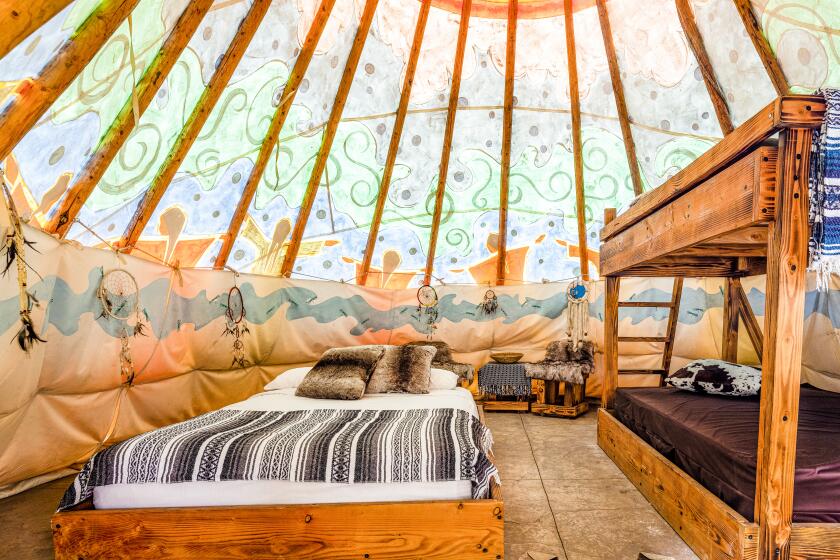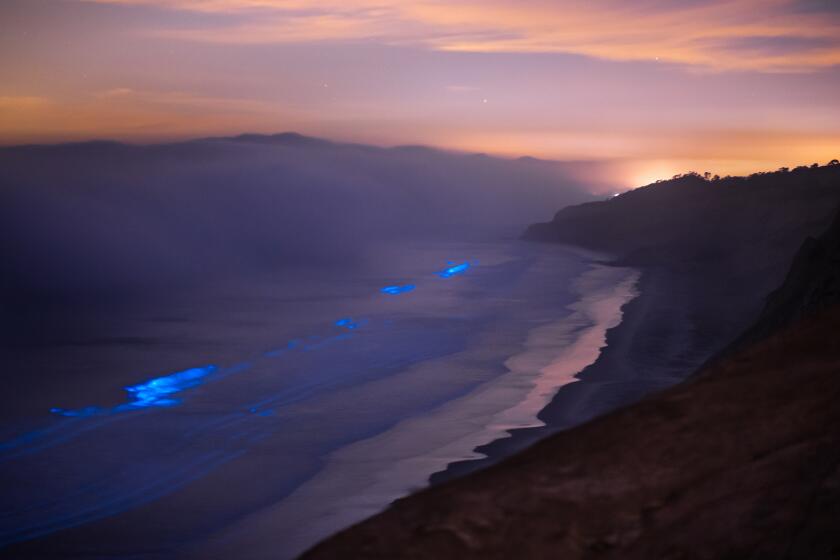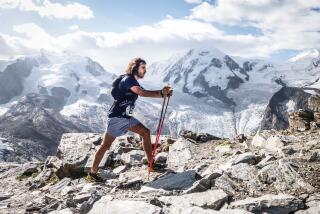34 hours on America’s most scenic train. Is it as dreamy as it sounds?
I took Amtrak’s Coast Starlight train from L.A. to Seattle, a 34-hour journey. (Julia Carmel / Los Angeles Times)
There are certainly more efficient ways to get from Los Angeles to Seattle than sitting in a metal box for 34 hours. But Amtrak’s Coast Starlight train wasn’t designed for people who are in a rush.
Perhaps you’ve come across this train on Instagram, YouTube or TikTok, where people rave about its gorgeous observation cars — called “sightseer lounges” — boasting floor-to-ceiling windows and cinematic views of the Oregonian forest. (“10/10 would recommend the Coast Starlight for the views alone,” one TikTok creator noted, showing off the flowers they drew while gazing at the scenery.)
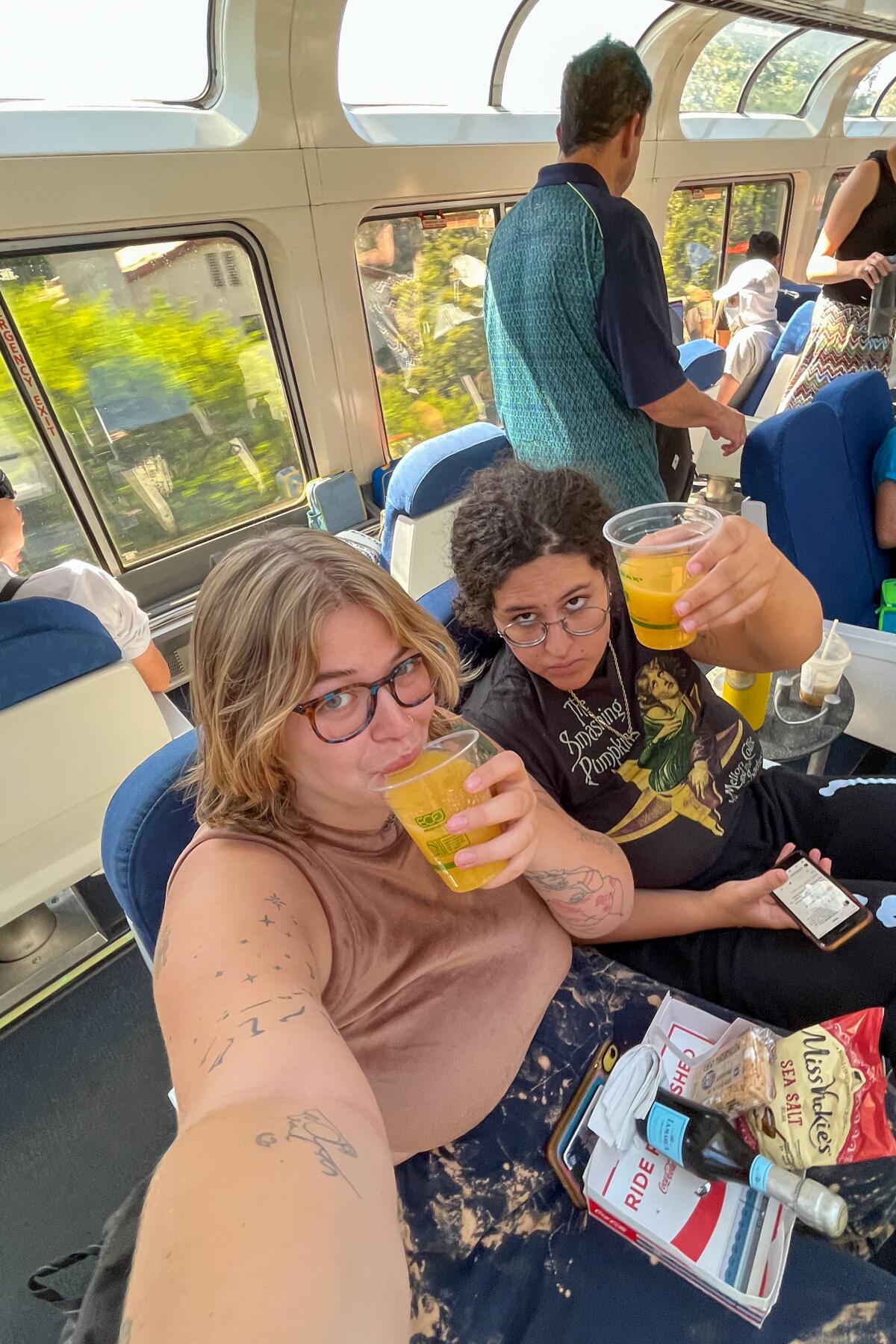
But much of the viral footage of the train — which leaves L.A. every day around 10 a.m. and gets to Seattle the following night around 8 p.m. — was taken by travelers who were riding it for a short stretch, or those staying in the sleeper cars, which have beds, private bathrooms with showers and access to the restaurant-style dining car. These “roommettes” and bedrooms, which can run upwards of $600, are far less economical than the $100 coach seats that can be booked if you plan far enough in advance. I wanted to find out if I could really romanticize sleeping in an awkwardly reclined chair and eating countless bags of chips.
So as a man of the people, I convinced my partner to accompany me on the full 34-hour journey in coach seats. Here’s what we wish we knew before getting on the train.
You’re there for the scenery — not the amenities
“Ticket for Seattle, welcome aboard,” our train conductor said with a chuckle as we departed Union Station. “Braver than me!”
There are quite a few reasons why we were some of the only people riding all the way from L.A. to Seattle on a Wednesday in the coach and business cars. The most obvious is that many people would not want to spend a full night sleeping in a chair, but the shared bathrooms, which get progressively worse over the course of the trip, are a close second. More on that soon.
Sure, call it ‘glamping.’ These campsites in Joshua Tree, Ventura, Catalina and Big Bear do all (or most) of the work for you, allowing you to spend your time enjoying nature.
The Coast Starlight is not Amtrak’s longest route (that would be the 65-hour-long Texas Eagle), but from start to finish, the train takes about 11 times as long as the three-hour flight from L.A. to Seattle, or twice as long as the roughly 17-hour-long road trip. As we climbed on board, we were sent to our assigned seats (you only get to choose whether you want to be on the upper or lower level). Ours were on the left side of the train, which is a bit more coveted as it faces west and gets better views, but no matter where your assigned seat is, you’ll have access to the picturesque observation car.
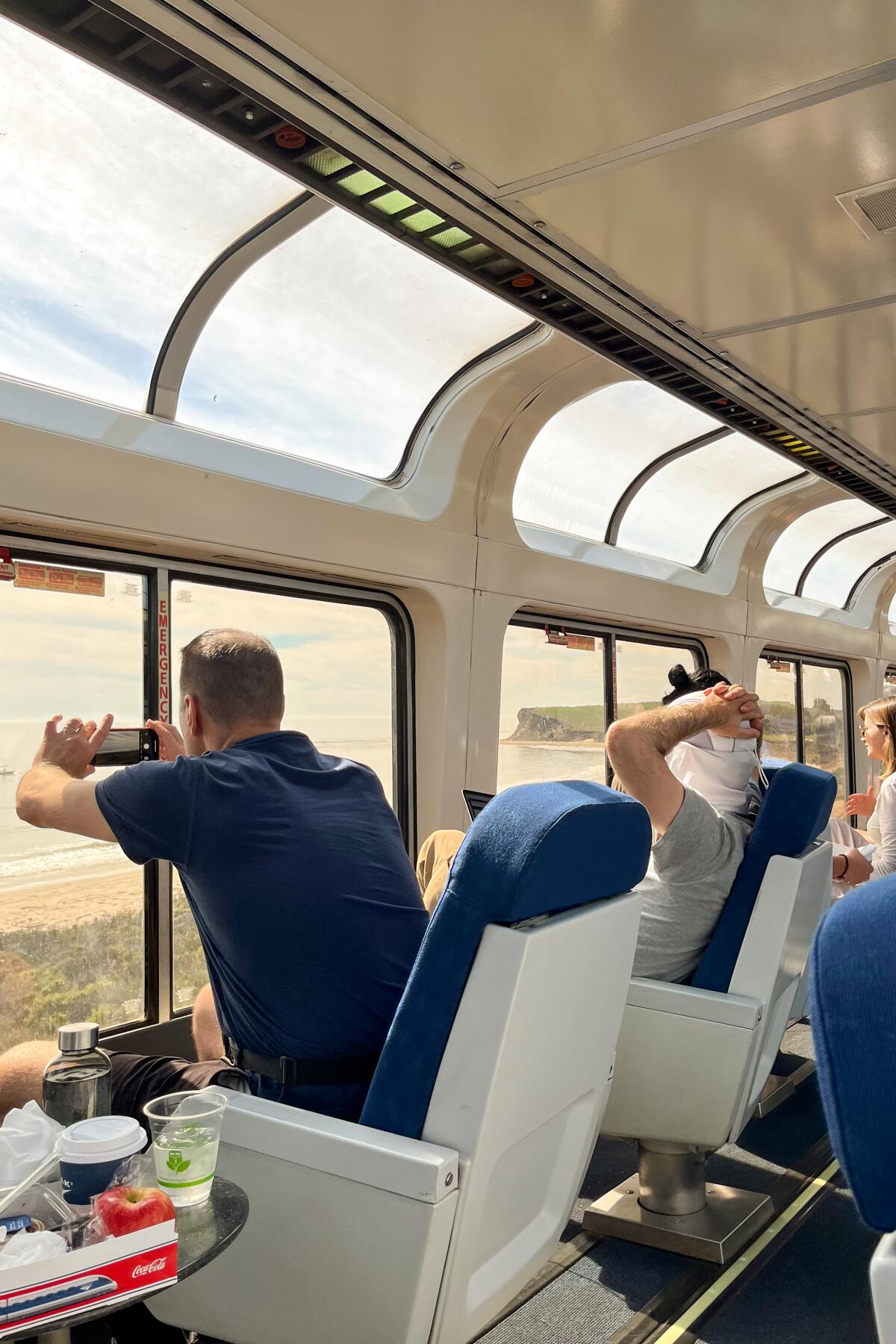
When we pulled into our first stop, Burbank, shortly after 10 a.m., we passed Fry’s Electronics, the video store in Jordan Peele’s “Nope,” with its big crash-landed saucer above the entrance. By the time we got to Van Nuys 15 minutes later, the woman running the cafe in the observation car announced that she was open for business, so we made our way over.
The observation car was already packed with passengers who had rushed in as soon as the conductor finished checking their tickets. On the upper level, there are dining tables and a few dozen seats facing huge windows that curve onto the ceiling. Below it, there’s a small cafe serving snacks and grab-and-go food — think microwave-reheated sandwiches, hot dogs and pre-prepared salads — which is the only food accessible to coach passengers.
“Please wear your shoes when you come into the cafe car,” one staff member said over the speakers as we tried to find seats, which raised the question of why that needed to even be announced.
To be totally honest, the biggest flaw of the trip was the smell of the observation car. Perhaps we caught it on a particularly ripe day, or maybe it was the lack of open windows, but even within the first hour on board, that car was notably stinky.
“I just want to go back to my room,” one child screamed to his mother as we sped along the tracks.
“It’s the Wild West out here,” my partner said while talking on the phone with their boss. A woman walking by started laughing and nodded in agreement.
But soon enough, our noses adjusted and the car became a bit less chaotic. By noon, when we passed Oxnard, the train got incredibly close to the coast, kicking off about three hours of stunning, up-close views along the Pacific Ocean. We decided to take a trip down to the cafe, where we ordered mimosas, sea salt chips and a Rice Krispie Treat to enjoy with the scenery.
The first call for dining car reservations soon went over the loudspeaker, but we were sad to learn that only sleeper car passengers, and some lucky business class passengers, are allowed to reserve a table there.
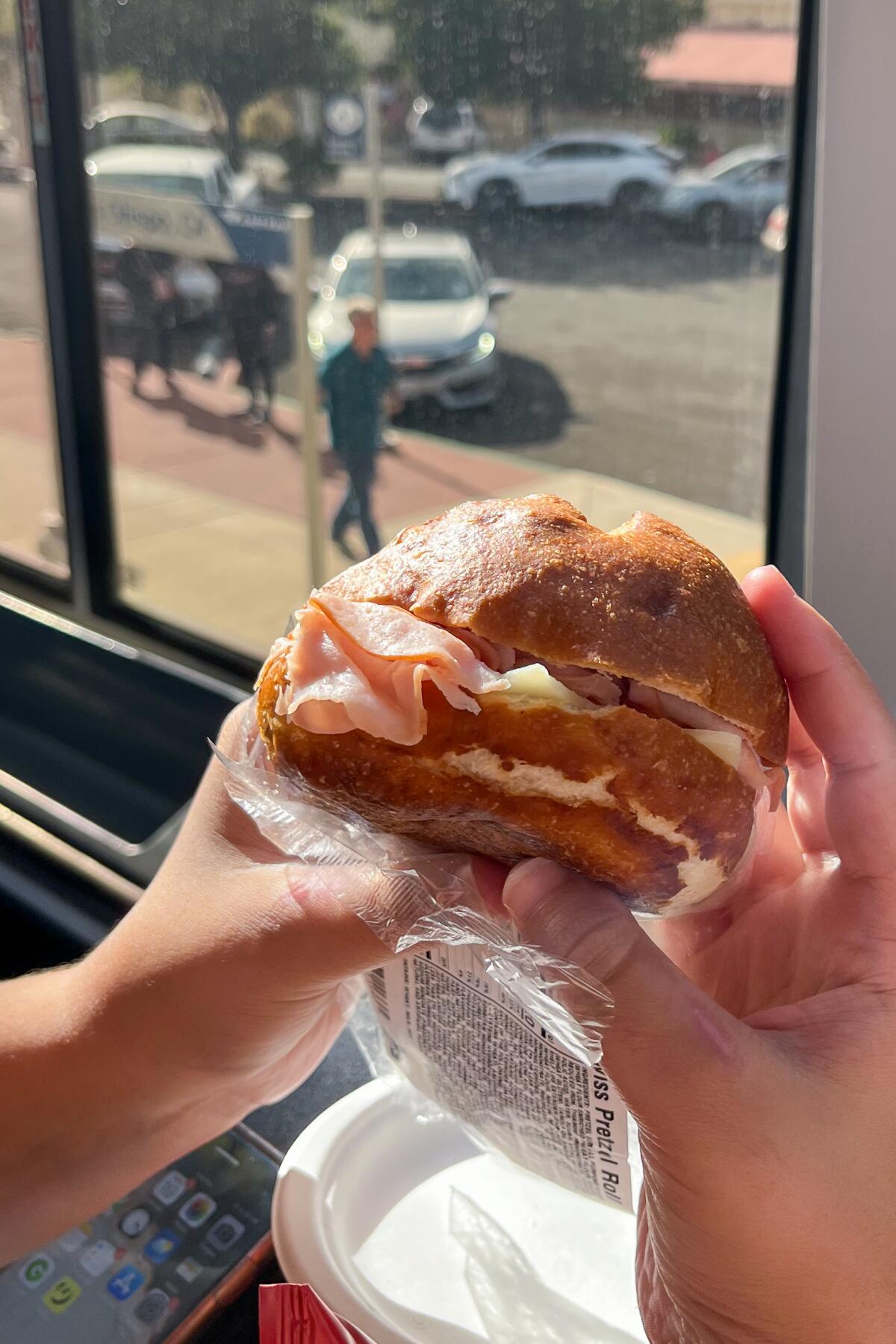
Around 3:30 p.m., following our stop at San Luis Obispo, the staff closed the observation car to clean. When it reopened about 15 minutes later, they lightly scolded everyone for leaving crumbs and hogging seats. “We’re all grown-ups here, please act like one,” the announcer said.
By that time, we had worked up an appetite, so we tried the ham and Swiss sandwiches from the cafe. It was nothing to write home about — as my partner put it, some food just “tastes like nothing” — but it wasn’t offensively bad. We started to wonder what else we were going to eat for the next four meals.
Between Paso Robles and Salinas, we got a bit restless. The reality that we still had more than 24 hours to go on the train seemed to sink in, and when a woman near us pulled a Chipotle bowl out, we started feeling a bit feral.
As we passed a beautiful sunset, we schemed for how we too could get our hands on Chipotle. We decided to take a risk and try to order delivery to the Salinas Amtrak station, which we knew would be the next “fresh air stop.”
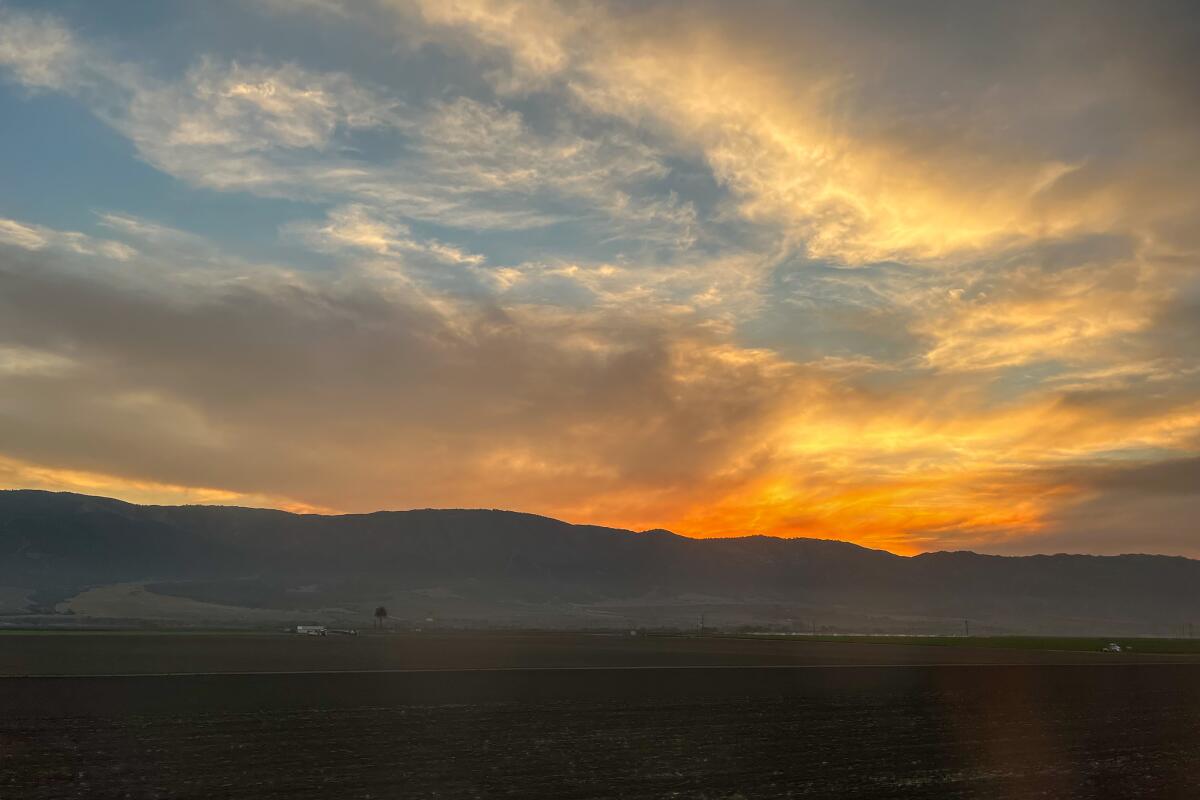
The plan went quite well (shout out to Jose, our delivery driver in Salinas, who patiently waited at the station for a few minutes), though we agreed to pack our meals and snacks if we ever took another extended train ride.
There’s nothing but time, so you might as well make some friends
After pulling off our Chipotle drop, we started chatting with a man sitting a few seats away from us in the observation car. We learned that our new friend, Aaron Shimoda, was also riding the train all the way from L.A. to Seattle.
Aaron, 23, said he’d already taken two long-haul Amtrak trips before the Coast Starlight: the 20-hour-long trip from Fort Lauderdale, Fla., to Raleigh, N.C., and the 17-hour-long trip from Emeryville, Calif., to Salt Lake City, Utah.
“I could probably fly [to Seattle] for just as much, and it would only take a few hours to get up there,” Aaron said. “But I’m taking the train because I want to actually see the sights.”
Taking time between jobs, he figured it was the perfect time to leave Vancouver and get a rail pass to visit friends and family around North America. Aside from simply loving trains, he said these trips give him an opportunity to see lots of small towns and meet new people along the way.
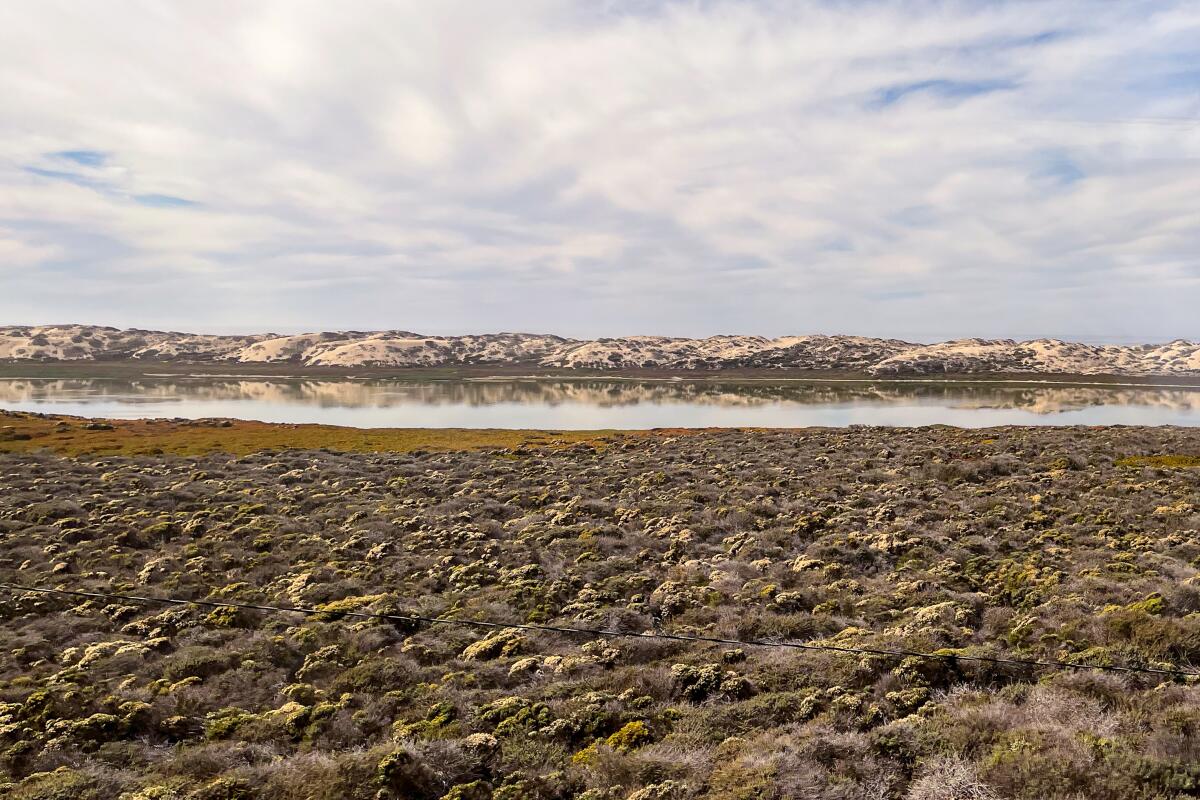
“When I was doing my Florida to Raleigh trip, I met a guy on there who was going from Florida to New York because he’s an actor,” Aaron recalled. “We were seatmates, and we started talking, and I shared my fried plantains and half of my Cubano with him. We became really good friends.”
There are some things he wish he knew before embarking on the first trip — “Download movies on Netflix before the train; bring a book; bring snacks; bring a pillow if you have enough space,” he advised — but overall, he finds the views more than worth it.
Aaron said that even after this 34-hour trek is done, he still hopes to take the California Zephyr from Chicago to Northern California one day.
“I would probably want to do it when I have a bit more money so I can actually go and rent one of the sleeper cars,” he said. “So I’m not, like, dead and stinky by the third day.”
Patrick Coyne has photographed bioluminescence off the beaches of L.A. and Orange counties since 2019. He shares tips for seeing the magical ocean glow.
The restless night of sleep is worth the beautiful views
After sunset, the windows in the observation car became far less interesting, sending many passengers off to kill time in their seats. We made out the silhouettes of different small towns, including a garlic-themed truck stop in Gilroy — the garlic capital of the world — which sent us down a Wikipedia rabbit hole. (Did you know Gilroy’s Christopher Ranch ships more than 100 million pounds of heirloom garlic every year?)
By 10 p.m., the conductors dim the lights and stop making announcements for the next eight hours, making it the optimal time to doze off.
But despite all of the coach and business class seats being fairly roomy, it’s nearly impossible to get truly comfortable in them. Sure, you can recline the seat or pop up a footrest, but no adjustments you can make will compare to sleeping in a real horizontal bed.
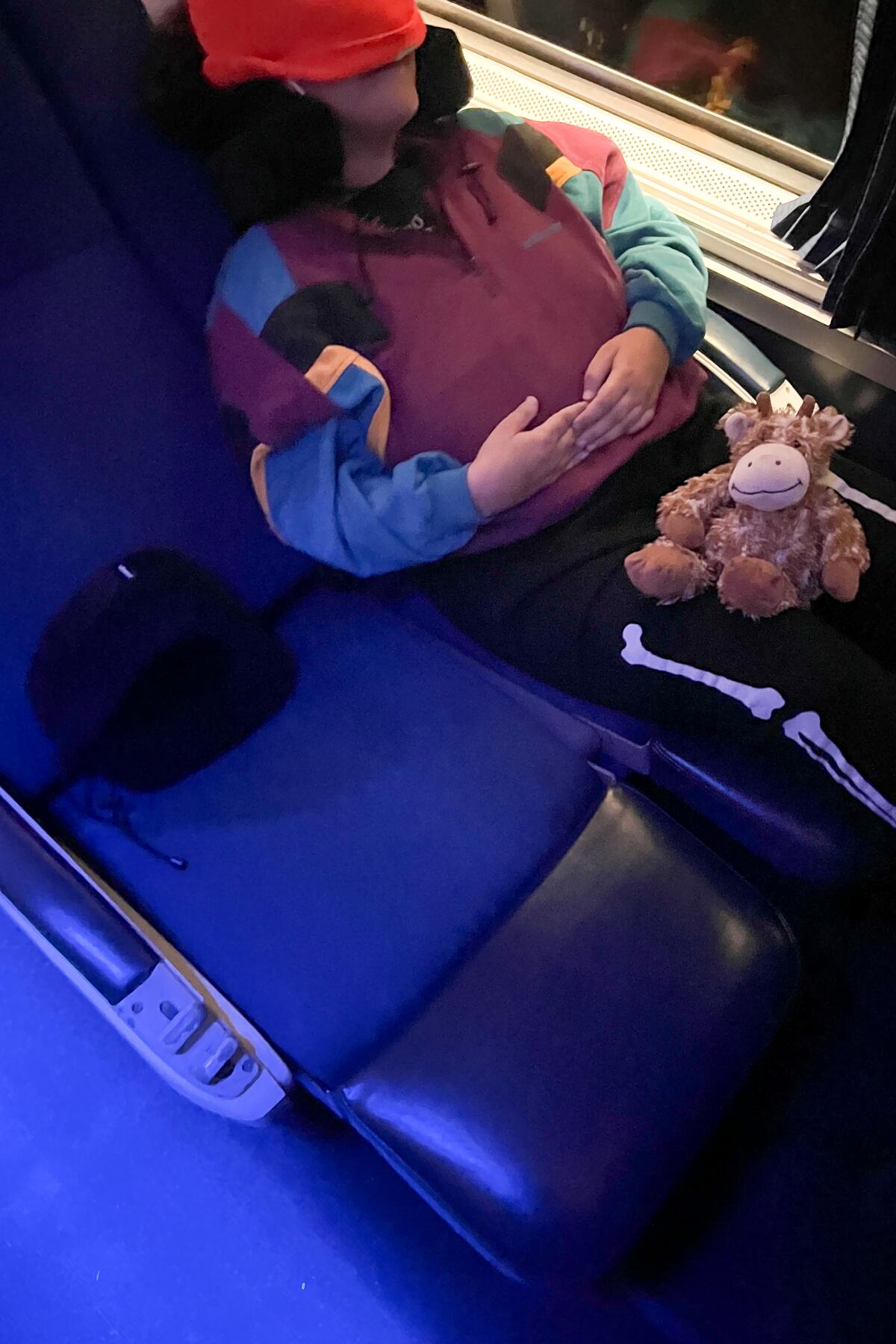
The longest commercial flight in the world is nearly 19 hours, traveling more than 9,500 miles from New York City to Singapore. Nineteen hours into the Coast Starlight, you’ll be somewhere around Dunsmuir, Calif. — only about 600 miles from L.A. — grappling with the decision of whether it’s worth it to face the less-than-optimal bathrooms for a 5 a.m. pee.
Yet after a few more hours of enduring snoring and bright streetlights, the most beautiful sunrise will flood into your car, giving everything a hazy glow.
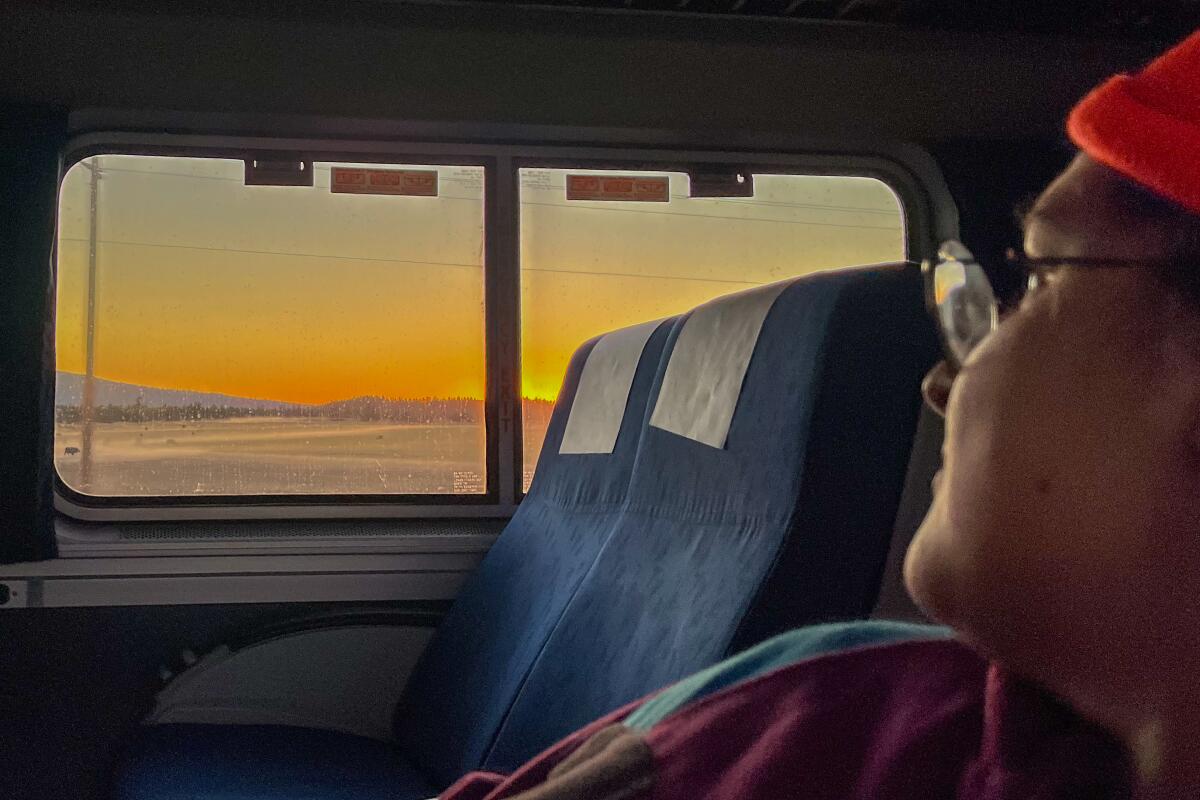
The second day is admittedly a bit more grimy: Anyone in coach or business class who stayed on the train overnight will be unshowered, and some of the bathrooms may smell unspeakably bad. So it goes.
It’s worthwhile, though, because traveling through Oregon is absolutely stunning. In our first hours over the border, we passed forests, gorgeous lakes and mountains, among other natural wonders. The early morning fresh air stops in Oregon are also delightfully chilly, giving everyone a chance to stretch and feel a bit refreshed.
After a few hours of watching cattle graze, we donned sweaters and moved back to the observation car. It was less crowded than the previous day (leading us to assume most of the folks who got on in L.A. left at some point) but still mostly full with sleepy-headed passengers reading books or making small talk over slightly burnt coffee.
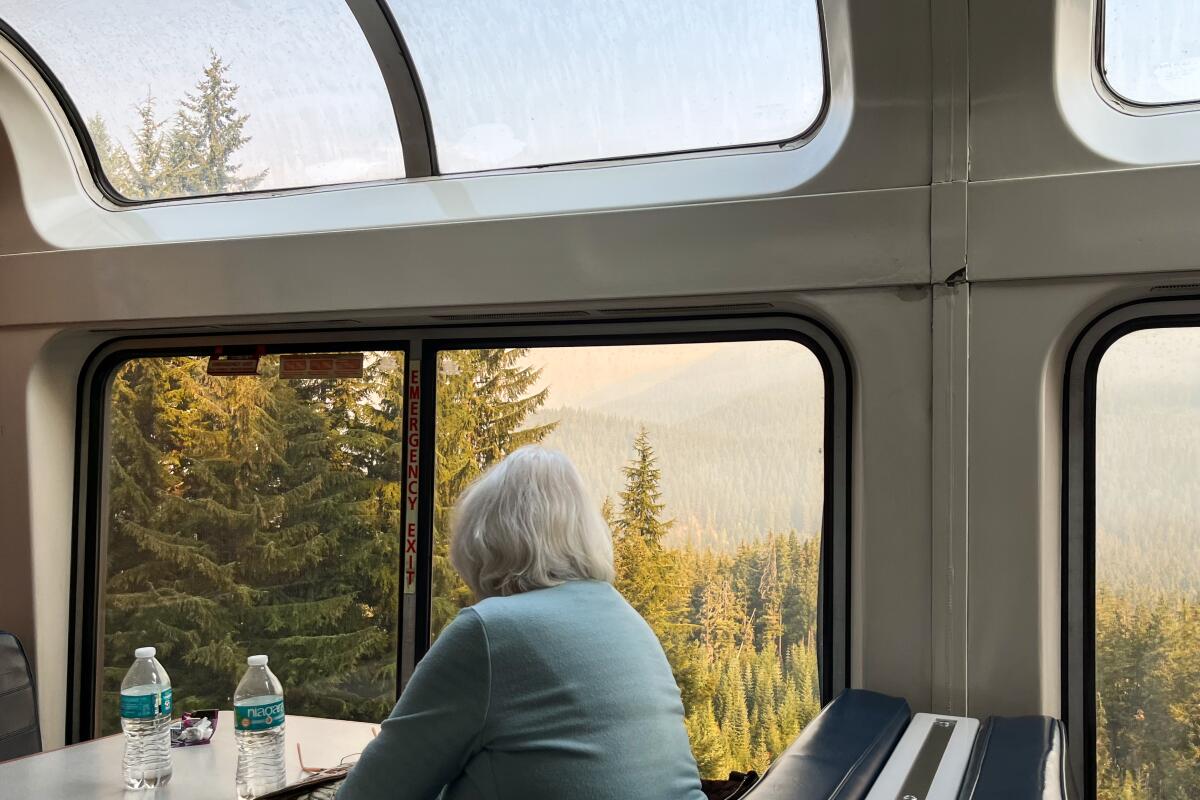
We found our friend Aaron again and joined him at a table. Our provisions in the morning were a breakfast sandwich (which again, tasted like nothing) and a coffee cake that my partner ordered, which was the star of the show. As we passed Odell Lake around 10 a.m., Aaron told us that he finally thought he found the right angle for sleeping on trains and pointed out a fellow passenger who brought a full duvet into the coach car.
The train started to move up the Cascades and into the Oregonian wilderness. Our conductor got on the P.A. system and told us good news and bad news: We would be traveling through 22 tunnels as we moved through the mountains, but smoke from fires in the region would turn the car stuffy.
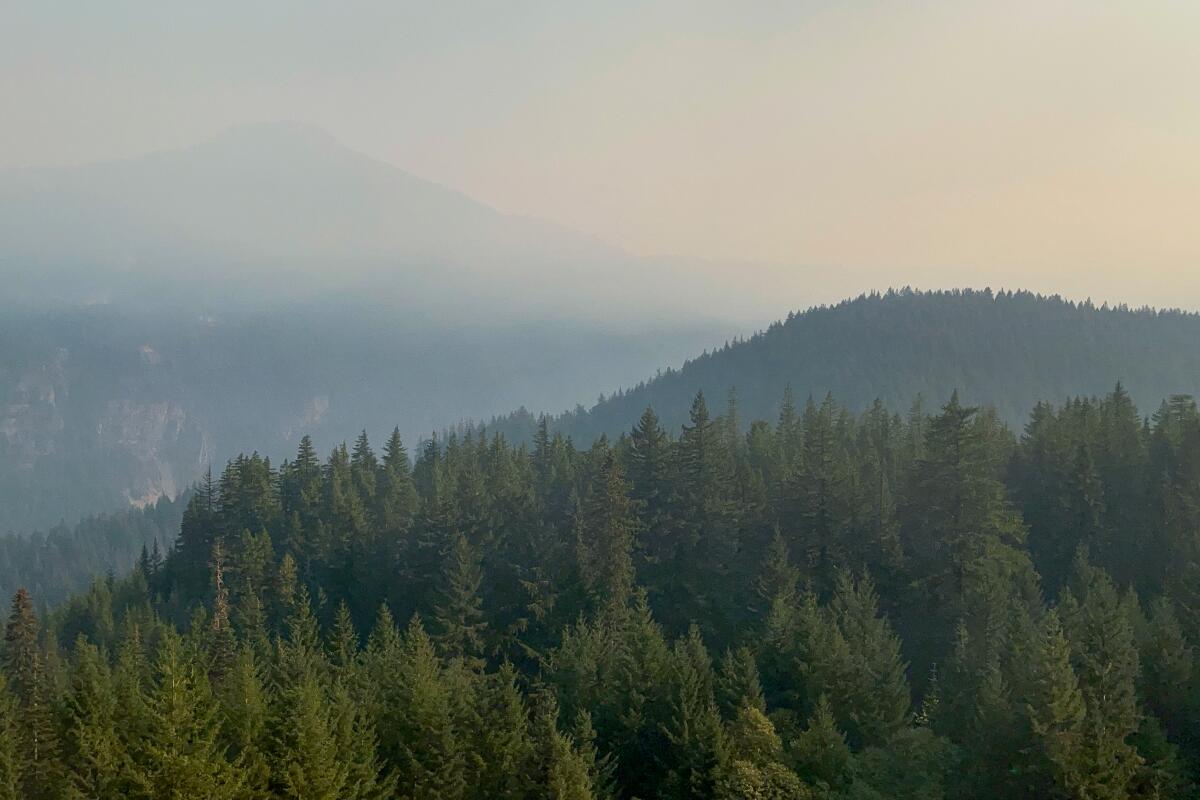
The woman running the cafe passed us surgical masks, which helped to stifle the scent, but the next few hours as we traveled through smoke and fog were eerily silent and quite hot. When my partner went downstairs to grab more chips, the woman said, “You’ve gotta wonder how they even made these tracks.” She made a good point; the views were gorgeous and a bit precarious as we traveled over cliffs and through the tunnels.
A little after noon, we cleared the wilderness and made it to Eugene, Ore. The atmosphere was still smoky as ever — that was the day Seattle and Portland were named as the two places with the worst air quality in the world — but as the impossibly high evergreens turned into small cabins and farmland, our stomachs started to grumble in protest.
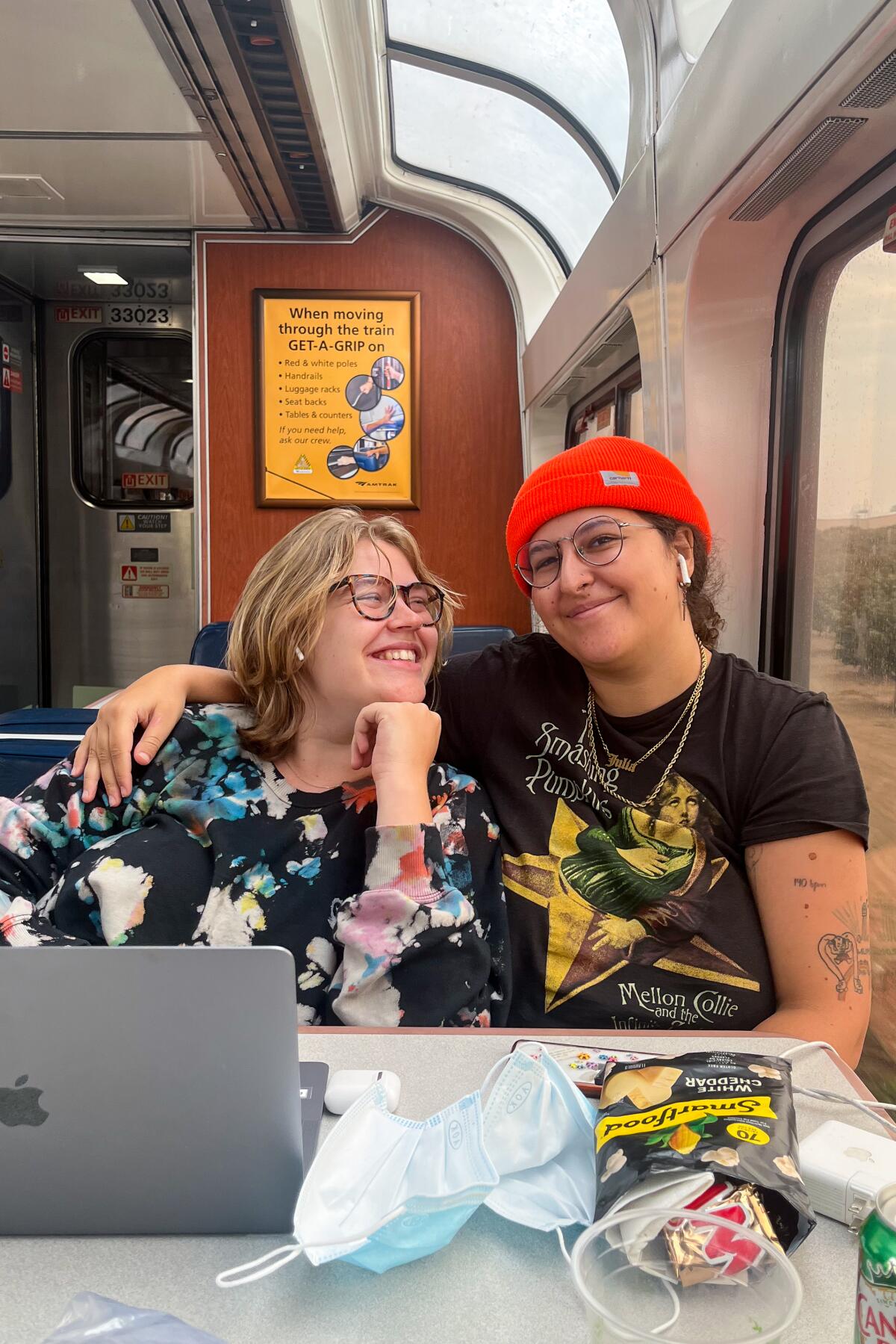
My partner went to take a nap, but as Aaron and I sat and admired the Pacific Northwest, I wondered exactly what I would eat for the next eight hours. I didn’t have it in me to order another “nothing” sandwich, and I couldn’t stomach another bag of chips. When my partner returned a few hours later, Aaron suggested something radical: What if we pulled off another food delivery scheme when we arrived for our next fresh air stop — Portland — a little before 4 p.m.?
It was just crazy enough to work. His selection was PDX Sliders, a highly rated burger joint that would make it to the station in just enough time. There was fear in the air that our delivery plans would be similar to the flight of Icarus: We could coordinate a food delivery once, but twice? Too bold.
As we approached the station, a conductor came on the speaker once more to offer words of warning to the passengers: Make sure you stay near your car at the fresh air stops, because “yesterday four people wandered off and missed the train.” An alarming thing to hear when planning a food grab.
But once again, our plan succeeded without a hitch. When the train pulled into Portland, passing bridges and scenery best known to us from the “Portlandia” intro, Aaron ran into the station and retrieved our food. The burgers tasted like the sweet flavor of victory.
The last few hours were enjoyable, as the concept of actually arriving at our destination was finally within reach. As people filtered in and out of the observation car, we stayed planted at the table we’d been at since about 9 a.m., eagerly awaiting the final announcements.
The Takeaway
Prettiest stretch: Klamath Falls, Ore., to Eugene, Ore.
The stretch that made us stir-crazy: Somewhere after San Francisco, when we had to stare into the darkness until we got sleepy
Most useful thing we brought: Neck pillows (we ordered ours two days before we left)
Most useful thing we wished we brought: More prepared food to eat on board
Best thing we ate in the cafe car: Streusel coffee cake ($3.50)
We weren’t mentally prepared for: The bathrooms
Was it all worth it? Absolutely
The cafe sold alcohol — mostly beer and whatever creative cocktail could be made with the juices on board — so we decided that once we reached Tacoma, Wash., we’d celebrate the end of our journey with a toast.
Like most experiences, the train ride to Seattle is not as romantic and picturesque as the supercut you see of it on social media. As any passenger will tell you, things inevitably go wrong (and some bathrooms will be grosser than you’d like). But if you’re lucky, you’ll have a few moments that are so special that all the others eventually fade to a blur. As the conductor gave one final announcement that he was kicking people out of the observation car and sending us back to our assigned seats, the three of us poured prosecco into plastic cups and cheers’d to our long journey.
More to Read
Sign up for The Wild
We’ll help you find the best places to hike, bike and run, as well as the perfect silent spots for meditation and yoga.
You may occasionally receive promotional content from the Los Angeles Times.
